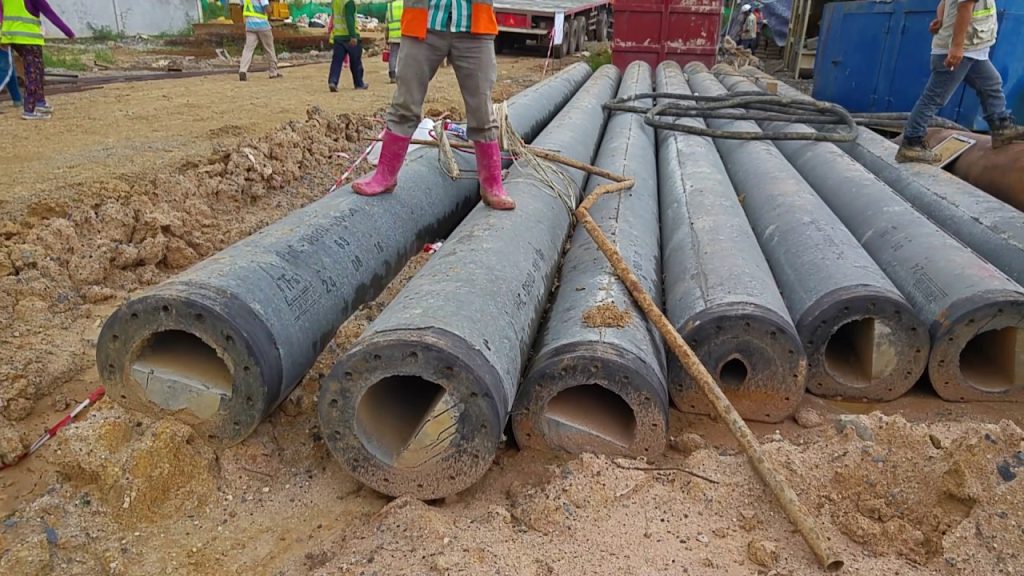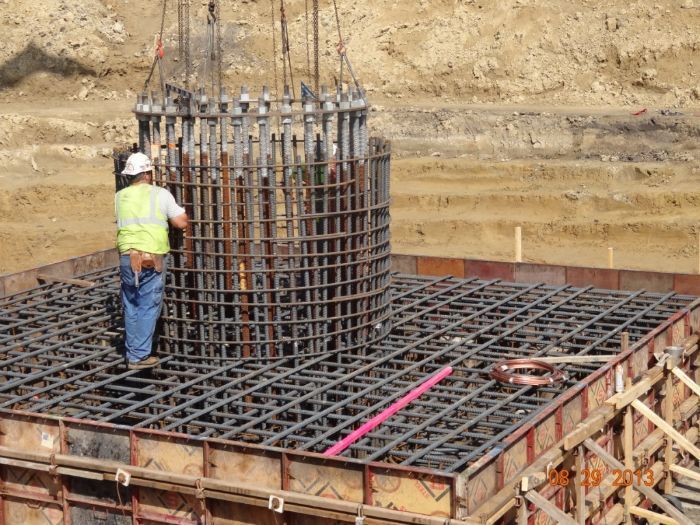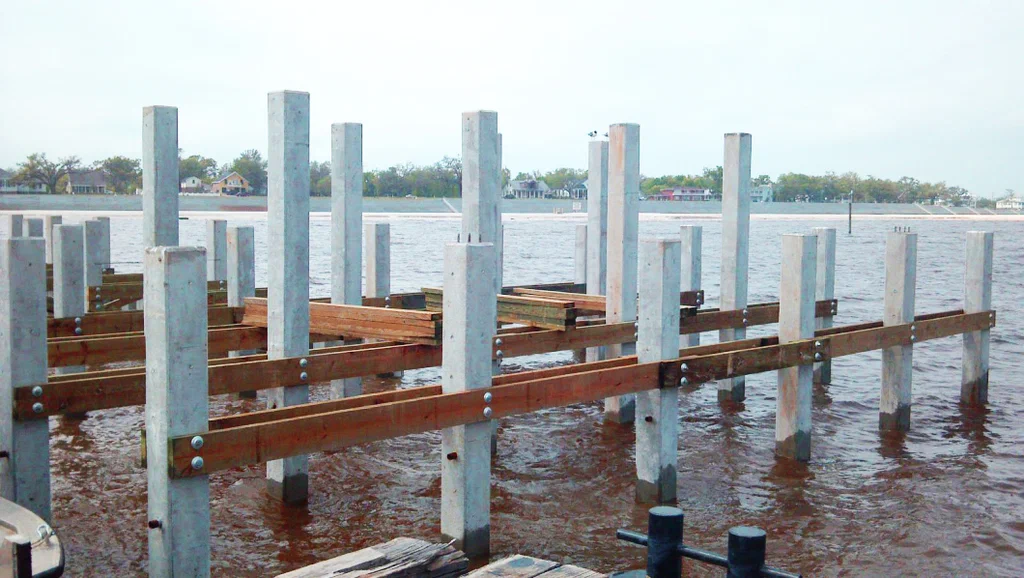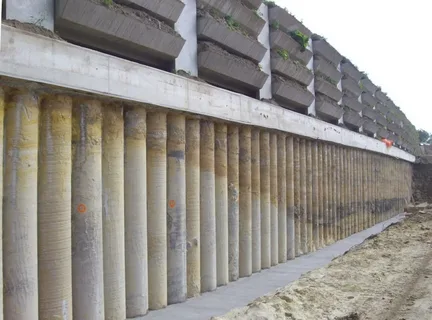What are Concrete Piles
In modern construction, concrete piles are vital components for deep foundational strength. Consider it a series of underground concrete pillars to stabilise buildings and other large structures. Thanks to their robustness, these pillars amazingly resist excessive drainage and are effortless to install, making them ideal for substructure provision.
In this blog, we’ll discover various concrete pile types, their advantages, and challenges for different structures and buildings.
Ideal Situations to Use Concrete Piles
- Concrete piles are used when the topsoil isn’t robust enough to support the building weight, such as clay-like soil, which is full of moisture and is fragile.
- These are used for supporting uplift forces and moving the building loads to the bedrock.
- Concrete piles are ideal when building weight takes little space and is heavy in magnitude.
- These piles help in resisting lateral forces.
- Concrete piles are used for experiencing greater durability and higher structural capacity.
- These types of piles are ideal when there are no resources to withstand the applied load by the shallow foundation.
Exploring Various Types of Concrete Piles
Mainly, concrete piles are categorised into three types:
- Cast-in-Place Piles
- Cased Piles
- Uncased Piles
- Precast Piles
- Prestressed Pile
- Reinforced Concrete Pile
- Post-Tension Pile
Cast-in-Place Piles
Cast-in-place is one of the most used concrete piling foundations in construction endeavours due to its unmatched benefits of easy handling and eliminating storage needs. The precast piles are more prone to damage and must be safely stored. Cased piles guarantee a secure binding and precise placement, and uncased piles provide a budget-friendly cast-in-place piling solution.
Utilising tapered or cylindrical thin-walled steel tubes, cased cast-in-place forms a mould for concrete, lining the bored hole for piling. This option is favourable, letting engineers inspect the pile condition before concrete pouring. Furthermore, casing assists in an accurate and reliable pouring without any anomalies. Different types of cast-in-place piles have diverse applications in various sectors with varied soil conditions, such as:
- Mac-Arthur Piles
- Raymond Piles
- Swage Pile
- Union Metal Monotube Pile
- Western Button Bottom Pile
When it comes to cost, uncased cast-in-place piles are more economical. They require necessary inspection and preventive measures for a successful installation. Due to their direct connection with the soil, they are suitable for high-cohesion soils. If the soil is non-cohesive, there is a likelihood of breaking the water or soil into the pile, resulting in degradation and cracking in the reinforcement.
The common types of uncased cast-in-place piles are as follows:
- Frankie Pile
- Simplex Pile
- Pedestal Pile
- Vibro Pile
- Precast piles




Mon–Fri: 8:00am-6:00pm
Skilled Labour
Customer Satisfaction
Advanced Machines
Precast Piles
Precast piles are installed with the help of heavy driving equipment by driving or hammering the pile into the soil. Ideally, this pile type can be used when extending the foundation above water or ground level. These piles are not manufactured on-site; rather, they are constructed in a controlled environment in various shapes. They can be tapered cross-sections or uniform and cast in octagonal, square, or circular forms.
The bottom of uniform cross-section piles is neatly pointed and protected with a cast steel shoe to secure the pile and help it penetrate the hard strata while driving. Hollow cross-sections are employed to construct precast piles with grand widths, which helps minimise the weight and intensify the pile-driving effectiveness.
Post-Tension Pile
When constructing a post-tension pile, high-steel cables are installed in sleeves or ducts following the rebar after pouring the concrete and the necessary curing time. Once the concrete stabilises, hydraulic jacks are utilised to produce the tension between cables by applying force to the concrete. To create tension, both ends of the cables are anchored with concrete slabs. If the post-tensioning is bonded, the grout is inserted into the ducts, shielding the tendons and securing them tight to the concrete.
What to Know When Using Concrete Piles for Your Project
Concrete piles in construction or civil engineering projects are predominantly used to construct a firm foundation. Like any other method used for construction, it comes with a set of potential advantages and challenges to overcome. Before undertaking a project with concrete piles, considering all those pros and cons is vital for engineers.
Advantages of Concrete Piles
Resilience:
You can expect a long life for concrete piles due to their inherent resilience against various environmental factors, including biological hazards and moisture.
High Load Capacity:
Concrete piles are ideal for heavy structures, high-rise buildings, and bridges due to their capability of withstanding heavy loads.
Adaptability:
Available in versatile options, such as cast-in-situ, precast, and prestressed concrete piles, they can be used according to the soil conditions and your project’s load-bearing requirements.
Limitations of Concrete Piles
Installation Challenges: The concrete pile installation in hard rock or soil requires big machinery, ultimately leading to higher costs and time-consuming process.
Potential for Damage: The pile’s driving process causes vibrations, harming neighbouring structures and disturbing local ecosystems.
Cost: The initial cost for installing concrete piles are higher than other foundation types; however, the durability and robustness make this investment worthwhile in the long run.
Comprehending these benefits and challenges helps you decide before undertaking the concrete pile foundations. Determine whether or not this foundation technique suits your project requirements, followed by considering the costs, durability, and stability.
Life Expectancy of Concrete Piles
The lifecycle of concrete piles can fluctuate based on construction style and methods of installation. Generally, the concrete used in domestic and commercial building structures is anticipated to endure for 30 to 100 years. Precast concrete is expected to have a lifespan of 50 years; in contrast, modern concrete piles used in large infrastructures can last for 100 years with proper maintenance.
